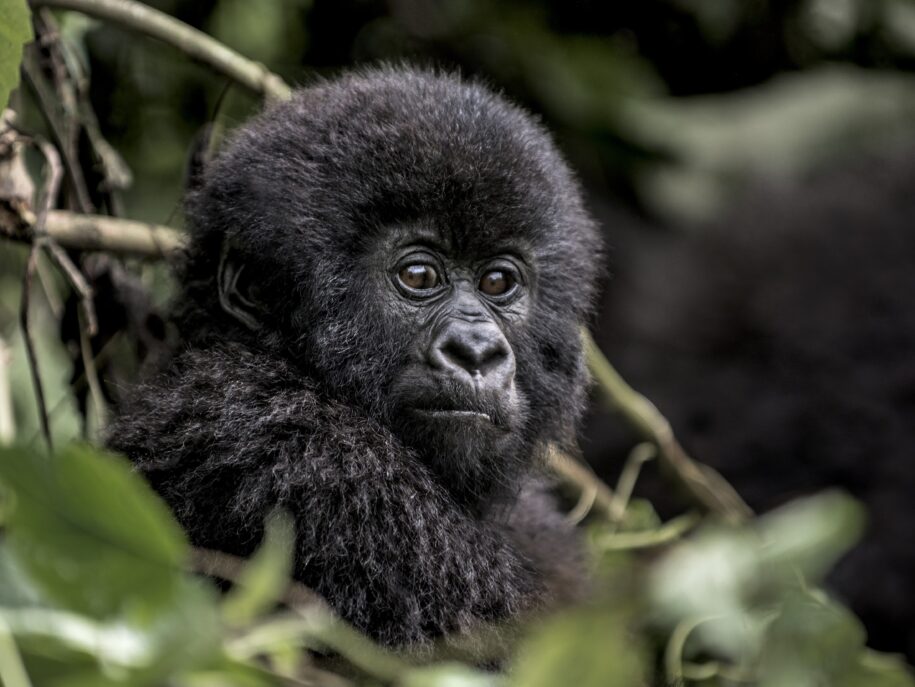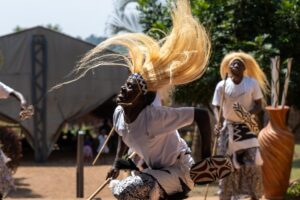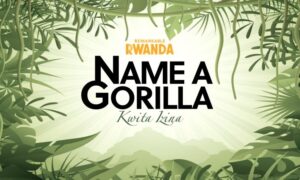World Gorilla Day, marked annually on September 24, serves as a reminder of the urgent need to protect one of the planet’s most endangered primates.
In Rwanda, the day carries added weight. It aligns closely with the country’s long-term strategy around conservation, community development, and responsible tourism.
Rwanda’s approach to mountain gorilla conservation is widely studied and often cited in global tourism and environmental circles.
Mountain gorillas exist in only three countries (Uganda, Rwanda, Congo), and their survival depends on sustained collaboration.
Rwanda has positioned itself at the center of that work, using World Gorilla Day to take stock of progress and reinforce the systems built to protect these animals.
This isn’t about celebration for its own sake. It’s about accountability, recognition, and education.
The day provides a platform for national institutions, park authorities, guides, rangers, and local leaders to engage the public.
How Rwanda Celebrates World Gorilla Day
a) Community Events and Education
Rwanda’s celebration of World Gorilla Day starts at the community level.
Conservation doesn’t happen in isolation. The Rwanda Development Board (RDB) runs education campaigns in districts surrounding Volcanoes National Park.
Schools participate in conservation-focused programs where students learn about the ecological role of mountain gorillas, the threats they face, and why protecting them matters for future generations.
These efforts aren’t limited to children.
Community dialogues, radio segments in local languages, and outreach through cooperatives help make conservation part of daily conversation.
By involving residents directly, Rwanda reinforces the principle that conservation succeeds only when communities see themselves as part of it—not observers, but stakeholders.
b) Kwita Izina: The Gorilla Naming Ceremony
World Gorilla Day often coincides with Kwita Izina, Rwanda’s annual gorilla naming ceremony.
While technically a separate event, the two are closely linked in message and timing.
Kwita Izina honours the birth of new gorillas over the past year, with names chosen by a mix of conservationists, scientists, park staff, and guests.
The ceremony, inspired by the Rwandan tradition of naming newborns, is held near the park and broadcast nationally.
It’s a moment of recognition—not just for the gorillas themselves, but for the trackers, rangers, and veterinarians whose work made their survival possible.
It also serves as a visible marker of Rwanda’s commitment to long-term conservation.
Every name reflects a story, a challenge overcome, or a milestone in the ongoing effort to protect the species.
c) Tourism and National Engagement
Although World Gorilla Day isn’t a commercial event, it does intersect with Rwanda’s tourism sector.
The day brings together government representatives, conservation partners, and members of the private sector who work in or around the park
Discussions often cover tourism policy, conservation financing, and how to balance visitation with long-term habitat protection.
The goal isn’t to promote tourism for its own sake but to frame it as a tool that supports conservation and creates local value.
Rwanda has implemented a revenue-sharing model where a portion of park fees goes directly into community projects—schools, clinics, roads—that serve the areas most connected to gorilla tourism.
Celebrating World Gorilla Day offers a moment to highlight how that model works in practice and how it can continue to evolve.
Why World Gorilla Day Matters
I. Conservation Impact
Mountain gorillas remain critically dependent on human intervention for their survival.
Decades of targeted conservation work have stabilized—and in some areas, increased—their population.
Rwanda’s contribution has been central to that progress.
By securing habitat within Volcanoes National Park, maintaining rigorous anti-poaching patrols, and investing in veterinary services like the Gorilla Doctors program, the country has helped shift the trajectory for a species once on the edge of extinction.
World Gorilla Day functions as an annual checkpoint.
It draws attention to the results of that work and reinforces the idea that conservation is not static—it’s a continuous process shaped by science, policy, and on-the-ground decision-making.
Rwanda uses the day to take stock, share data, and reaffirm its conservation goals in full view of the international community.
II. Local Benefits
The impact of gorilla conservation in Rwanda extends beyond ecological success.
In practical terms, it brings employment, infrastructure, and long-term income into remote areas.
Rangers, guides, porters, hospitality workers, and small-scale entrepreneurs all rely in some way on the tourism system built around gorilla protection.
Rwanda’s revenue-sharing model ensures that a portion of park income funds public services in nearby districts.
These investments—classrooms, water systems, agricultural training—aren’t symbolic.
They provide tangible benefits that link conservation with improved quality of life.
World Gorilla Day serves as a moment to recognize those links and keep the public conversation grounded in conservation.
III. Global Symbolism
Few countries have connected conservation so tightly to national identity and tourism policy.
Rwanda’s handling of World Gorilla Day reflects that integration.
It’s not a standalone event but part of a strategy that ties species protection to international visibility.
Rwanda is often cited as a case study in how wildlife conservation can function as a core pillar of tourism.
That’s why the day matters. It brings visibility to a model that’s working and challenges others to think beyond short-term gains.
Rwanda’s approach to World Gorilla Day shows what it looks like when conservation is treated as a policy. The celebration isn’t just about gorillas. It’s about what happens when a country decides to protect something and builds systems strong enough to make it last.



